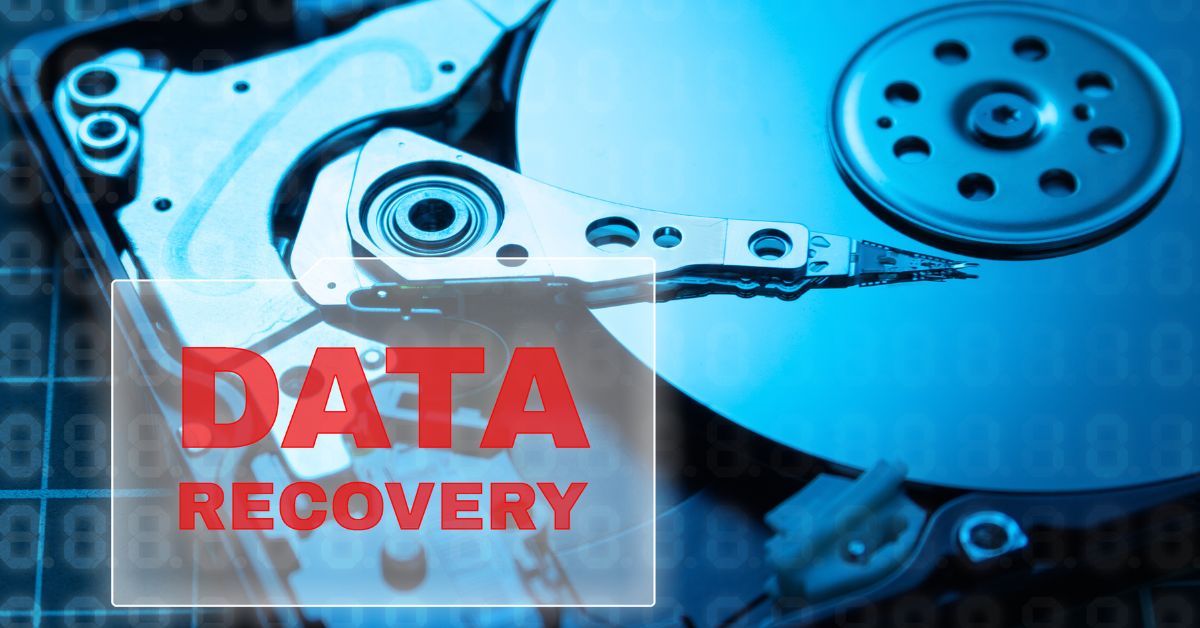
Brought to you by Proven Data:
Imagine the sinking feeling: you accidentally delete a critical file, your hard drive crashes, or a ransomware attack encrypts your data. All your important documents, photos, and memories seem lost forever. But fear not! Data recovery services are here to help you retrieve your precious information.
This article will guide you through the world of data recovery, explaining what it is, when you might need it, and what to expect from a data recovery service.
What is Data Recovery?
Data recovery is the process of salvaging inaccessible, corrupted, or lost data from digital storage devices like hard drives, solid-state drives (SSDs), USB drives, and even memory cards. Data recovery specialists use specialized tools and techniques to access and recover data that your operating system can no longer recognize.
When Do You Need Data Recovery?
Here are some common scenarios where data recovery services can be your lifesaver:
- Accidental deletion: We’ve all been there – hitting the wrong button and watching a crucial file disappear.
- Hard drive failure: Physical damage or logical corruption can render your hard drive inaccessible.
- Formatting errors: Formatting mistakes can sometimes erase data unintentionally.
- Software corruption: Corrupted software can make your data unreadable.
- Ransomware attacks: These malicious programs encrypt your files, demanding a ransom for decryption. However, data recovery might be an option in some cases.
What to Look for in a Data Recovery Service
- Success rate: Look for a company with a proven track record of successful data recoveries.
- Experience: Choose a company with experience handling your specific type of data loss.
- Security: Ensure the data recovery service prioritizes data security and maintains strict confidentiality practices.
- Free consultation: Reputable companies offer free consultations to assess your data loss situation and provide a cost estimate.
- Cost transparency: Be wary of hidden fees and get a clear upfront quote before proceeding with the recovery process.
Remember: Don’t attempt DIY data recovery unless you have the expertise. Further attempts to access the data yourself could permanently damage it and make professional recovery impossible.
Conclusion
Data loss can be a stressful experience, but with the help of a professional data recovery service, there’s a good chance of getting your valuable information back. By acting quickly and choosing a reputable company, you can increase your chances of a successful recovery.
A Guide About Mobile Device Forensic Examination Process
Today, smartphones have become so advanced that all the tasks that people used to use computers to perform can now be done with mobile phones. Currently, there are many applications developed that can be used to work easier and faster than computers, and these are only supported on phones.
Since people are now technology dependent, most use computers at their workplace and constantly throughout the day. But it’s not possible to have constant access to a computer like a phone in a pocket. For example, you can use your cell phone anytime, from making calls and sending texts to transferring money and storing confidential documents.
Although earlier cell phones were limited to making calls and sending messages, smartphones today can store millions of data records in the form of emails, messages, photos, location data, financial information, and thousands more. It’s also possible to recover lost data from a smartphone. Following are details about mobile data recovery, like the mobile forensics services by Provendata, for mobile phones.
Mobile Device Forensics Definition
To understand mobile device forensics, you need to know what mobile device forensics is. Generally, the branch of digital forensics that deals with the recovery of digital evidence or data from a mobile device under forensically sound conditions is called mobile device forensics.
The term “mobile device” usually refers to a mobile phone, but it can also refer to any digital device that can communicate and has internal memory, such as tablet computers, PDAs, and GPS devices.
Mobile Device Forensic Testing
Digital evidence can be fragile and unstable. Evidence stored on a mobile phone can be destroyed or altered by careless handling. Moreover, it’s imperative to examine mobile phones according to the best standards for digital forensics to identify what data was changed and whether it was done on purpose or accidentally.
There are many qualified experts who are able to preserve evidence and stop theft by examining mobile devices using mobile device forensics tools. The first management of digital evidence is generally done using four processes: acquisition, preservation, identification and collection.
Identification
Typically the discovery phase involves looking for digital evidence relevant to the case, and this evidence can span multiple servers, devices, systems, and cloud accounts. A mobile phone’s data is not limited to the device itself. Extensive documentation should be used in the identification process as throughout the investigation and in the early stages, documentation is essential to prevent taint of evidence.
Collection
Generally, physical devices, including smartphones and other mobile devices, are collected at this stage. At times securing digital evidence can be more difficult than securing traditional forensic evidence, so the necessary steps must be taken to protect the evidence.
Acquisition
A digital forensic examiner uses various methods to collect or forensically copy data from mobile devices and the process of doing all these activities is called the acquisition process. Methods used for this process are: logical extraction, file system extraction, physical extraction, backup files, cloud data etc.